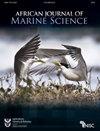Metabarcoding of marine zooplankton in South Africa
IF 1.4
4区 生物学
Q3 MARINE & FRESHWATER BIOLOGY
引用次数: 7
Abstract
Metabarcoding is an emerging method in which DNA barcoding is combined with next-generation sequencing to determine the biodiversity of taxonomically complex samples. We assessed the current state of DNA barcode reference databases for marine zooplankton in South Africa and undertook a metabarcoding analysis to determine the species composition of samples collected with plankton tow nets. Analysis of DNA sequences mined from the literature and in online barcode reference databases revealed incomplete records for all taxa examined. Barcode records were dominated by meroplanktonic species with commercially important life-history phases (fishes and decapod crustaceans) and by species occurring in easily accessible nearshore habitats. Holoplanktonic species were underrepresented, despite making up the bulk of zooplankton biodiversity, including most potential indicator species. Metabarcoding analysis of plankton samples could identify 45% of amplicon sequence variants to species level based on BOLD databases (123 species) and similar numbers using GenBank and the MIDORI COI classifier. Morphological analysis of samples could not achieve comparable resolution at species level, but with some exceptions it recovered similar classes of organisms to those found by metabarcoding. The need for integrative molecular/morphological studies to increase and validate barcode reference databases of key zooplankton taxa is recognised. Metabarcoding of marine zooplankton in South Africa has now been successfully undertaken and the methodology is expected to facilitate high-resolution monitoring of zooplankton biodiversity in pelagic ecosystems and accelerate the discovery of new species.南非海洋浮游动物的代谢编码
代谢条形码是一种新兴的方法,将DNA条形码与下一代测序相结合,以确定分类复杂样本的生物多样性。我们评估了南非海洋浮游动物DNA条形码参考数据库的现状,并进行了代谢条形码分析,以确定用浮游生物拖网收集的样本的物种组成。对从文献和在线条形码参考数据库中挖掘的DNA序列的分析显示,所检查的所有分类群的记录都不完整。条形码记录主要是具有重要商业生活史阶段的部分浮游物种(鱼类和十足目甲壳类动物),以及出现在容易到达的近岸栖息地的物种。尽管浮游动物物种(包括大多数潜在的指示物种)占浮游动物生物多样性的大部分,但其代表性不足。基于BOLD数据库(123个物种)和使用GenBank和MIDORI COI分类器的类似数量,浮游生物样本的代谢编码分析可以识别45%的扩增子序列变体。样本的形态学分析无法在物种水平上获得可比的分辨率,但除了一些例外,它恢复了与代谢条形码发现的类似类别的生物体。人们认识到,需要进行综合分子/形态学研究,以增加和验证关键浮游动物分类群的条形码参考数据库。南非海洋浮游动物的代谢编码现已成功进行,该方法有望促进对远洋生态系统中浮游动物生物多样性的高分辨率监测,并加速发现新物种。
本文章由计算机程序翻译,如有差异,请以英文原文为准。
求助全文
约1分钟内获得全文
求助全文
来源期刊

African Journal of Marine Science
生物-海洋与淡水生物学
CiteScore
2.60
自引率
16.70%
发文量
17
审稿时长
6-12 weeks
期刊介绍:
The African (formerly South African) Journal of Marine Science provides an international forum for the publication of original scientific contributions or critical reviews, involving oceanic, shelf or estuarine waters, inclusive of oceanography, studies of organisms and their habitats, and aquaculture. Papers on the conservation and management of living resources, relevant social science and governance, or new techniques, are all welcomed, as are those that integrate different disciplines. Priority will be given to rigorous, question-driven research, rather than descriptive research. Contributions from African waters, including the Southern Ocean, are particularly encouraged, although not to the exclusion of those from elsewhere that have relevance to the African context. Submissions may take the form of a paper or a short communication. The journal aims to achieve a balanced representation of subject areas but also publishes proceedings of symposia in dedicated issues, as well as guest-edited suites on thematic topics in regular issues.
 求助内容:
求助内容: 应助结果提醒方式:
应助结果提醒方式:


